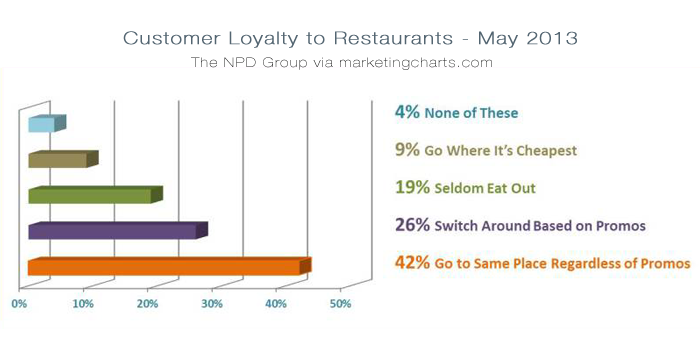Mobile marketing has come a long way, and it isn’t about to slow down. Big-name businesses are spinning new strategies, creating new approaches and redefining the consumer’s accessibility options; here are seven takeaways for your mobile marketing app.
Invigorate Your Mobile Marketing App with Seven Distinct Strategies
More than 5 billion of the 7 billion people on earth own a smartphone. Mobile marketing strategies are benefiting from the sheer number of consumer users, and your strategy needn’t be contingent on last year’s biggest booms. Don’t wait; take advantage of these seven crucial strategies for a mobile marketing app.
7 Sure-fire Mobile Marketing App Strategies
Strategy One: Narrow the Buying Process
Consumers like quick, easy buying. Mobile devices, fortunately, have enabled a world capable of providing such services. Unfortunately, mobile marketers have mere minutes to entice buyers. If you can ignite calls-to-action quickly, however, you’re in luck.
48% of consumers start mobile research with a search engine.
Because 48 percent of consumers start mobile research with a search engine, your mobile marketing app strategies only need to offer visual presentation and conducive offers. They should, however, engage customers quickly, help them achieve their destination, and repurpose old marketing approaches with information-packed menus and media.
Strategy Two: Target Browsing Behavior
Browsing behavior is the fuel source for everything mobile. Lightning-quick load times and plenty of multimedia won’t be impactful if behavior isn’t cataloged and implemented. Browsing behavior streamlines future company actions. It assists website loads while enhancing your SMS strategies, too.
Use analytical tools to garner user information, and serve mobile customers on their terms. The future of mobile marketing is one of prioritized customization and personalization. Don’t fall by the wayside as other providers step in to offer buyer-specific exclusives.
Strategy Three: Tweak Your Advertising Via Email
Your email marketing campaign should be conjoined with your mobile marketing strategy. Every marketing effort, every partnership, every sale and every consumer is intimately linked to your brand’s outward appearance. Email marketing should be at your strategy’s forefront.
Direct email marketing campaigns gain much from strategic mobile marketing campaigns, too. Your mobile email marketing strategy is capable of delivering ads in unique form, generating off-platform hype through an extension of your brand’s innermost ideals.
Be careful, though, because mobile platforms aren’t friendly to drawn-out emails with bulky messages. Make sure your messages are tight, and make offers clear immediately. A big chunk of mobile users delete messages before opening them, so it’s important to avoid “being a statistic.”
You might also like: 10 Tips for Effective Restaurant Email and SMS Marketing
Strategy Four: Reevaluate Your SMS Strategy
Currently, 98 percent of text messages are read within minutes of receipt. SMS marketing is one of the business world’s biggest resources, and it’s capable of pumping mass information across wide channels.
98% of text messages are read within minutes of receipt.
Your SMS strategy must be watertight to succeed, though. Don’t use bulk SMS platforms without first segmenting your audience. Moreover, make sure your message content is accessible to the consumer. Consider big-name data plans, like Apple’s. Make sure all content, all images and all links pass through pre-defined industry barriers.
Strategy Five: Swap Conversion for Engagement
Typically, mobile devices carry lower conversion rates than other platforms. They do, however, carry incredibly high conversion and bounce rates. When compared to desktop marketing efforts, mobile-based solutions tend to sacrifice navigation for in-store offers and location-specific services. Don’t play the game until you’ve studied the field. Convert consumers on your website, and communicate with them via text.
Strategy Six: Measure Cross-Platform Data
Cross-platform data is different from buyer behavior, but it serves the same end. Mobile monetization is huge this year, and half of e-commerce traffic is achieved via mobile platforms. When your consumers leave your e-commerce platform—follow them!
Because you’re prioritizing communication on mobile, cleaning up the “spare parts of conversion” requires intensive reasoning and data gathering. Mobile is an asset, but so are your web pages, social media pages, messaging platforms and feedback forums. Don’t let them go to waste.
Strategy Seven: Implement Media
Media rules the business world’s roadside now. Because smartphones are getting smarter, quicker and stronger, multimedia marketing schemes are thriving. Your mobile marketing strategy needs such resources, so you should be engaging YouTube videos, Vines, Twitter-hosted comments and other social media features.
Many consumers access media through apps, too, so remember to implement app accessibility, brand specials and mobile hotspots to please your customers. Overall, keep your consumer engaged. They’re constantly connected already, so it shouldn’t be too difficult.



